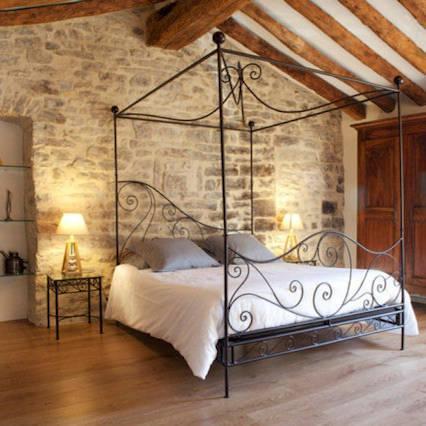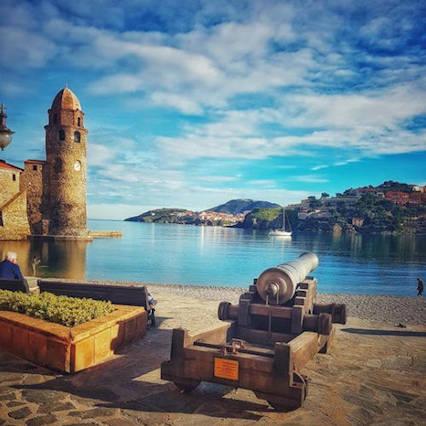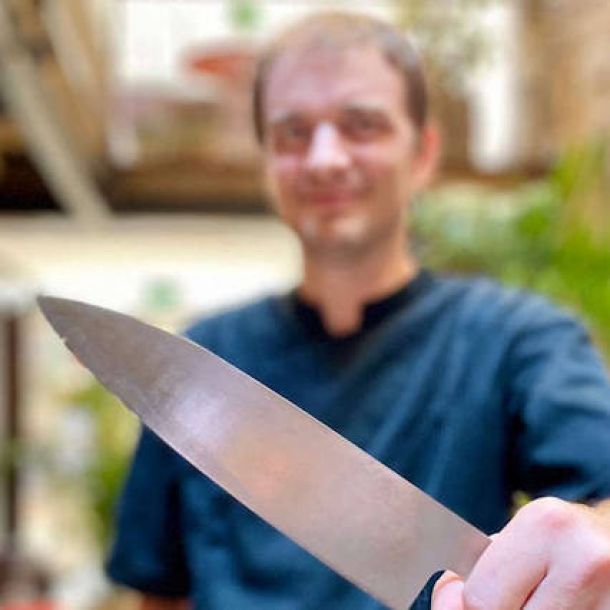- Last updated on .
- Hits: 20456
Best places to visit in Languedoc Roussillon in 2024
 There are plenty of places to visit in Languedoc-Roussillon region of France. This popular French holiday destination has long sunny days, Mediterranean beaches and plenty of tourist attractions. The Languedoc region is also home to thousands of miles of walks and bike rides; National Parks and wildlife reserves (such as the Camargue and the Cevennes); thermal springs and spas; grottoes and caves; and plenty of ancient historical sites covering the whole of the Languedoc's long history. Here we summarize some of the best places to visit in Languedoc Roussillon during 2024.
There are plenty of places to visit in Languedoc-Roussillon region of France. This popular French holiday destination has long sunny days, Mediterranean beaches and plenty of tourist attractions. The Languedoc region is also home to thousands of miles of walks and bike rides; National Parks and wildlife reserves (such as the Camargue and the Cevennes); thermal springs and spas; grottoes and caves; and plenty of ancient historical sites covering the whole of the Languedoc's long history. Here we summarize some of the best places to visit in Languedoc Roussillon during 2024.
The Languedoc region
The name Languedoc literally means "language of yes" – langue d'oc – but obviously something has gone missing in translation. "Oc" was how the Occitan-speaking inhabitants of this part of south-west France said " yes ", as opposed to northerners who said "oïl". Now, everyone in France says "oui" – apart from Catalan speakers in the southern province of Roussillon, who say "si", just to confuse things further.
Languedoc-Roussillon has always been more down-to-earth than its eastern neighbour, the Cote d'Azur and this is reflected in a landscape that ranges from rugged mountains to vine-covered hills and plains, down to its vast coast. Languedoc's turbulent history has seen religious persecution, farmers' revolts and an attempt to eradicate the Occitan language.
Best places to visit in Languedoc-Roussillon
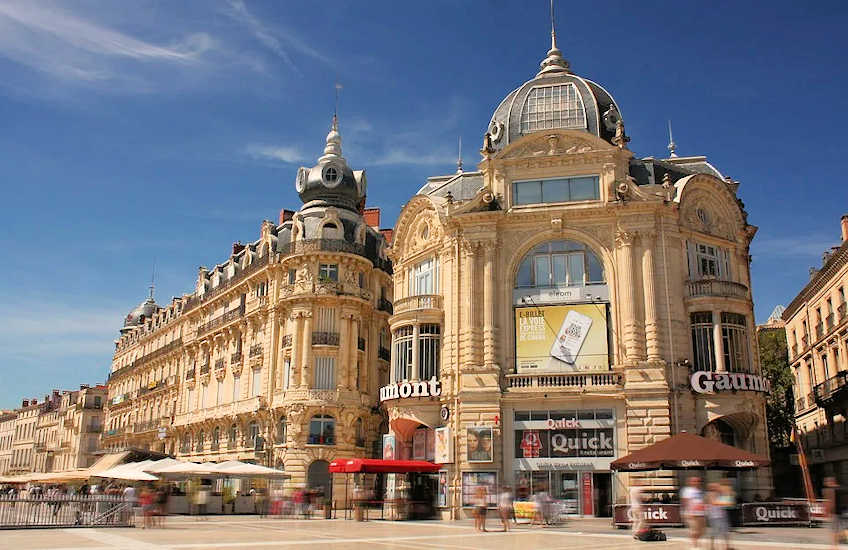 The Languedoc is also home to one of France's most dynamic cities, Montpellier, which has the world's oldest continuously operating university. Montpellier is the Capital of Languedoc and is also the fastest growing city in France. Montpellier also frequently tops the list of French cities the French people would like to live in. Montpellier's university helps to give that city an unusually large population of people under 25, which means that the bars, clubs and restaurants don't give up the ghost once summer ends. But once the students leave at the end of term, the annual summer festivities get into full flow.
The Languedoc is also home to one of France's most dynamic cities, Montpellier, which has the world's oldest continuously operating university. Montpellier is the Capital of Languedoc and is also the fastest growing city in France. Montpellier also frequently tops the list of French cities the French people would like to live in. Montpellier's university helps to give that city an unusually large population of people under 25, which means that the bars, clubs and restaurants don't give up the ghost once summer ends. But once the students leave at the end of term, the annual summer festivities get into full flow.
The Roman cities of Languedoc: Nimes and Narbonne, wear their long history comfortably while retaining a typically southern, relaxed ambience.
Rugby-mad Béziers in Languedoc is often overlooked as a cultural highlight, but its 14th-century St-Nazaire cathedral is a fine example of Gothic architecture. The original building was burnt during the infamous sacking of Béziers in 1209, when the Catholic Church's crusaders slaughtered thousands of people in their hunt for a handful of Cathar heretics. Make the effort to climb to the top to get magnificent views of the river Orb that winds through the city, and surrounding countryside. Every August, Béziers hosts its Feria – four days of bullfighting, singing and dancing.
Carcassonne combines its workaday lower town with the wonderful medieval Cité. Carcassonne castle is now the 3rd most visited site in the whole of France. Carcassonne castle was practically a ruin until it was restored in the 19th century. If you are visiting the Languedoc in July, make sure you head to Carcassonne for Bastille Day. Every 14 July, spectacular fireworks are set off behind the ramparts of La Cité, the grand finale of which is a dramatic impression of the whole citadel being ablaze.
Head further south in the Languedoc, and you reach the capital of French Catalonia: Perpignan, one of the most pleasing cities in which to amble about. The gateway to Perpignan is the 14th-century Castillet, which houses a Catalan folklore museum and whose arch is worth a climb for views of Mont Canigou. At the southern end of the town is the Palais des Rois de Majorque, an imposing 13th-century reminder of when Perpignan was part of the kingdom of Mallorca.
Places to visit in Languedoc region
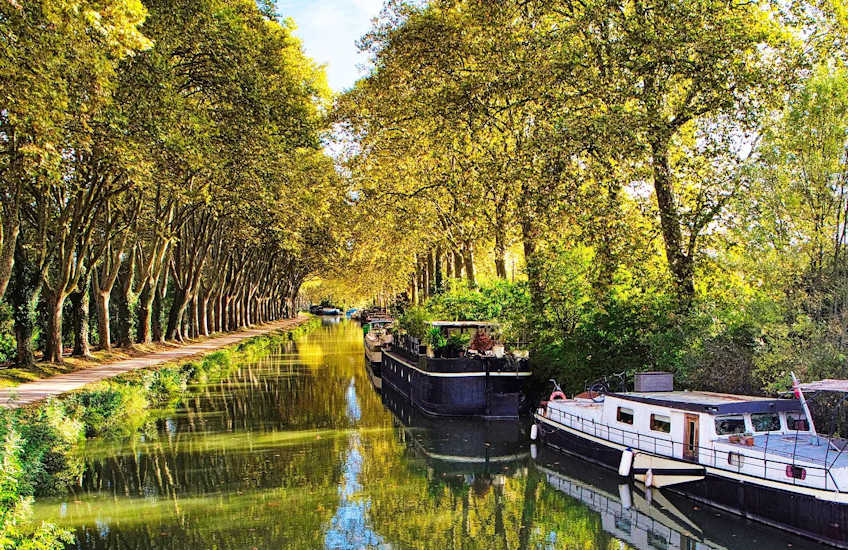 In recent years the Languedoc has become a popular French holiday destination, with long sunny days, Mediterranean beaches and plenty of tourist facilities.
In recent years the Languedoc has become a popular French holiday destination, with long sunny days, Mediterranean beaches and plenty of tourist facilities.
The Languedoc is also home to thousands of miles of walks and bike rides; National Parks and wildlife reserves (such as the Camargue and the Cevennes); thermal springs and spas; grottoes and caves; and plenty of ancient historical sites covering the whole of the Languedoc's long history. This includes dinosaur bones and eggs, prehistoric human remains, dolmens and megaliths, Greek and Roman architecture, and everywhere reminders of the the Cathars, the papal Crusade against them, and the Papal Inquisition that followed the crusade).
Within the Languedoc, there are 6 UNESCO World heritage sites. These sites include the majestic medieval castle at Carcassonne; the Canal du Midi, which flows from Toulouse in the West to the Mediterranean sea in the East; the Pont du Gard Roman aqueduct, which carried water 40km from Uzes to the Roman garrison town of Nimes; the beautiful medieval village of St-Guilhem-le-Desert, once a refuge from religious persecution and also situated along the famous pilgrim trail to Santiago de Compostela; and the Roman amphitheatre and chariot racing circuit in Arles.
Among the most popular sites to visit include:
- St Guilhem le Desert - the ancient village of St Guilhem, now designated a UNESCO World Heritage site, is widely regarded as the prettiest village in the South of France. Once a refuge for fleeing Protestants (Huguenots) during the 15th and 16th Centuries, St Guilhem's history dates back to 800 AD when the Abbey and village was founded by Charlemagne's counsellor Guilhem, who returned to Languedoc from Rome.
- Pont du Gard - this extraordinary Roman aqueduct located just north of Nimes is one of 6 UNESCO World Heritage Site located in the South of France. Complete with an excellent visitors centre and Mediterranean garden, the Pont du Gard, is a special place to visit in France.
- Oppidum d'Enserune - once the site of an important Roman fort and villa, recent archaeological excavations have revealed remnants from a Gaul settlement pre-dating the arrival of the Romans. The site offers a superb view over the Bassin de Montady - a wagon wheel pattern of fields - which it is believed was originally salt production site.
- Pezenas - the historical capital of the Languedoc under Prince Conti and once the former home of the French playwright, Moliere. Wander on a guided tour round the ancient streets of this beautiful Southern France town.
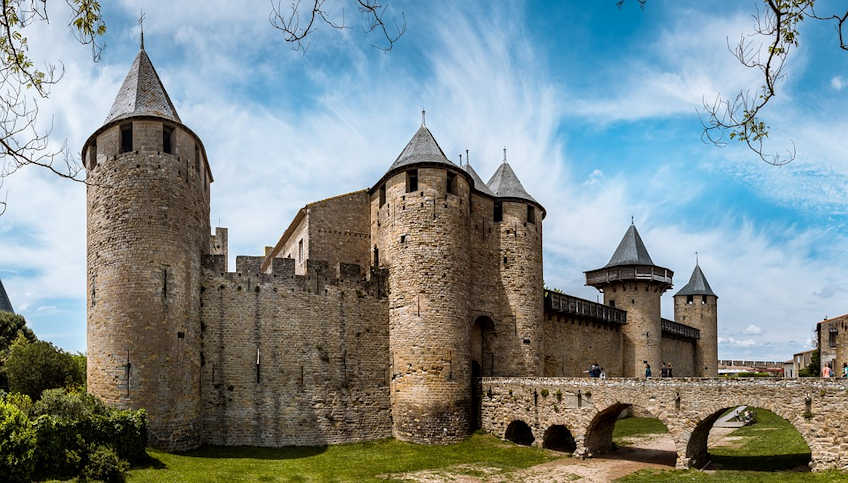 Grotte des Demoiselles - located close to the village of St Guilhem, these underground limestone caves are host to a wide variety of stalactites and unique mineral formations. The caves are a constant temperature of 14°C all year around.
Grotte des Demoiselles - located close to the village of St Guilhem, these underground limestone caves are host to a wide variety of stalactites and unique mineral formations. The caves are a constant temperature of 14°C all year around.- Abbey Valmagne - a Cistercian abbey founded in 1139. The abbey houses an impressive Gothic Church and was an important location for wine making. The wines produced by the monks provided an important source of income and by the 14th Century the abbey was the richest monastery in south France.
- Nimes amphitheatre - the best–preserved roman amphitheatre in the world. The amphitheatre is one of the best examples of Roman engineering design and construction - the oval shaped arena has perfect symmetry: 68 meters in length and 38 metres in width. The exterior stone façade is 21 meters high and comprises two floors of 60 superimposed arches. At the top, specially-drilled stones were positioned to allow long poles to be hung over the arena to provide shade with a huge canvas canopy. In Roman times, the monument could hold 24,000 spectators spread over 34 rows of terraces divided into four separate areas.
- Carcassonne castle - Carcassonne is an UNESCO World Heritage Site in the South of France. It is the sheer scale of the castle at Carcassonne that blows you away. There is a full size village inside the walls of the castle. The castle was first established in the 11th Century and in 1209 it was taken by Simon de Montfort during his crusade against the Cathars.
- Collioure - The picturesque coastal town of Collioure is truly an idyllic place. It is situated in the very south of France, 26 km (approx. 15 miles) from the Spanish border. It has always attracted a host of artists (such as Matisse, Derain and even Picasso) because of its 'special light' and you can follow the unique art trail through the town (see Collioure Art Trail for more information). Its small Catalan harbour is sheltered by a quiet bay where the Pyrenees meets the Sea.
- Aigues-Mortes - It is always a pleasure to spend time in Aigues-Mortes, even when the town is packed out during the summer months. This medieval walled town is romantically set among the dunes and plains of the Camargue. A tour of Aigues-Mortes' fortifications and grid pattern streets is a must on any visit to Languedoc-Roussillon.
- Canal du Midi - This Plane tree-lined canal that runs from Toulouse to the Mediterranean sea, is the largest UNESCO World heritage site on earth. The brain-child of Paul Riquet, a tax collector from Beziers, this mammoth civil engineering project was the most complex and greatest civil engineering undertaking since the time of the Romans.
- Arles - With its Roman heritage, complete with preserved Amphitheatre, Forum and Theatre; the beautiful 17th Century mansions and modern Museums and not forgetting the wide rolling river; Arles has it all. Arles was also the base for Van Gogh and Paul Gauguin, during their ill-fated but successful partnership in the 'Studio of the South'. Here van Gogh painted some of his most famous masterpieces.
The Languedoc region: the coast
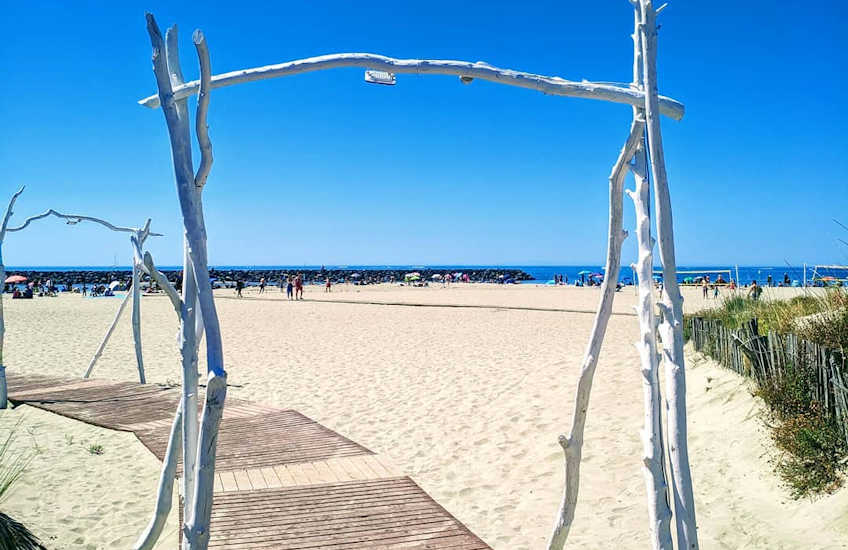 If you are spending your holidays in Languedoc, then you will benefit from over 40 blue flag beaches along its coastline. You won't find the St-Tropez poseurs here – nor the hefty prices that follow them.
If you are spending your holidays in Languedoc, then you will benefit from over 40 blue flag beaches along its coastline. You won't find the St-Tropez poseurs here – nor the hefty prices that follow them.
The beaches of Languedoc are not as developed as their eastern counterparts just now, but they are starting to catch up. Part of this is to do with the stronger winds and the erratic coastline, which has a tendency to sprout lagoons here and there.
A good example is the 12-mile spit of land that takes you to from Sete to Cap d'Agde. Once the road that hugged the beach was full of Caravans and Campervans. But these have been cleared away, a new road has been built that allows the beach to spill back further in-land and plenty of new car parks have been created. Money has also been spent on upgrading toilet and shower facilities.
Carry on to the smaller resorts of Valras-Plage, Gruissan (where Betty Blue was filmed), and down to the resorts around Perpignan and you'll find families settled in for the summer along the many Blue Flag beaches.
The landscape of the Languedoc coast changes once you get to the Côte Vermeille, towards the Spanish border.
Here, swimming coves are tucked into the rocky coast, and pretty seaside villages such as Collioure, Port-Vendres and Banyuls-sur-Mer add a distinctive Catalan flavour.
Places to visit in Languedoc region: Roman history
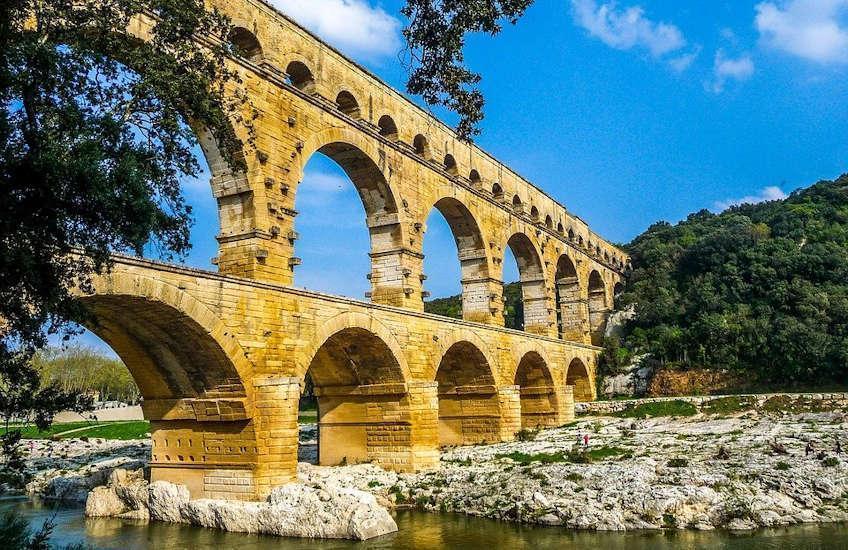 You can't miss the mark the Romans made on the Languedoc region of France. Just follow the remnants of the Via Domitia, the road built in 118BC to connect Spain with Italy.
You can't miss the mark the Romans made on the Languedoc region of France. Just follow the remnants of the Via Domitia, the road built in 118BC to connect Spain with Italy.
You can see part of it in Narbonne, a major port in Roman Gaul before the town's harbour silted up in the 14th century.
You can also pick up the trail of the Via Domitia, further east in the village of St-Thibery, near Pezenas, where an intact Roman bridge crosses the Hérault river.
Eventually, you can make your way to Nimes. Its splendid Roman amphitheatre is in better condition than the one in nearby Arles, and is the setting for bullfighting and open-air concerts.
An impressive feat of Roman engineering is the Pont du Gard, the three-tiered aqueduct that spans the Gardon river in the east of the region, near Uzès. Although much of it had to be restored during the 18th and 19th centuries, there is enough of the original Roman construction for it to be a Unesco World Heritage Site, and one of France's top-five tourist attractions.
Places to visit in Languedoc: the great outdoors
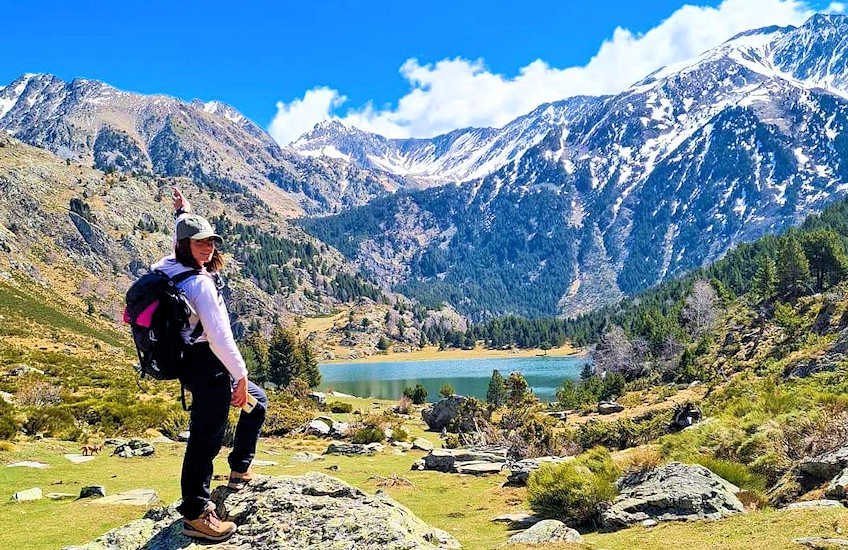 If you are lookin for outdoor things to do in Languedoc, then you are in luck because the Languedoc region of France is prime hiking, walking and cycling territory. The Parc Naturel Régional du Haut-Languedoc is at the southernmost point of the Massif Central. It includes the Montagne Noire, Mont Caroux, the Monts de Lacaune and the Monts d'Orb. The whole area covers more than 1,000 square miles of mountains, rivers, lakes and forests, with pleasant towns such as Bédarieux, Olargues and St-Pons-de-Thomières to use as a base for a walking or cycling holiday.
If you are lookin for outdoor things to do in Languedoc, then you are in luck because the Languedoc region of France is prime hiking, walking and cycling territory. The Parc Naturel Régional du Haut-Languedoc is at the southernmost point of the Massif Central. It includes the Montagne Noire, Mont Caroux, the Monts de Lacaune and the Monts d'Orb. The whole area covers more than 1,000 square miles of mountains, rivers, lakes and forests, with pleasant towns such as Bédarieux, Olargues and St-Pons-de-Thomières to use as a base for a walking or cycling holiday.
The Pyrenees provide even more vigorous exercise thanks to the higher altitudes. The eastern side of the Pyrenees includes the vast mountain range that includes the 9,137-ft Canigou, which Catalans consider the symbol of their region.
Horse-lovers can explore the landscapes and villages of the Camargue, where the delta of the Rhône river has created an unusually open landscape in which it's hard to see where the land ends and the lagoons begin.
For less strenuous fresh air, a cruise along the Canal du Midi will make the world slow down. Paul Riquet's tranquil waterway shows little sign of the financial grief its construction caused him back in the 17th century. Its 150 miles make for an agreeable journey, wherever you care to join it, and the towpaths are perfect for cycling.
The Languedoc region: food and wine
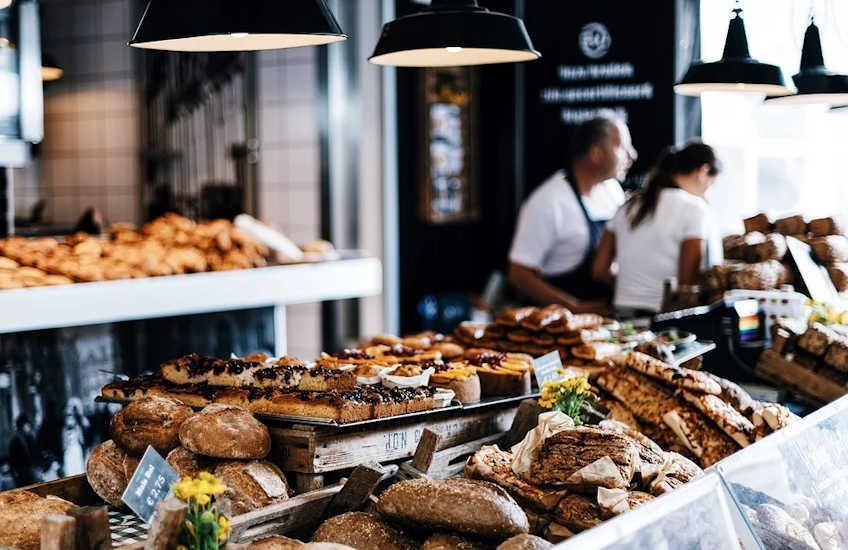 The cuisine in the Languedoc is as diverse as the geography. A jaunt along the Etang de Thau, the large lagoon between Sète and Agde, reveals mile upon mile of oyster, mussel and whelk beds, the products of which end up on plates throughout the region. A visit to Sète should include a taste of its seafood version of a Cornish pasty, the tielle, filled with octopus, squid and spices. Collioure remains a major producer of anchovies, despite the intensive nature of its processing.
The cuisine in the Languedoc is as diverse as the geography. A jaunt along the Etang de Thau, the large lagoon between Sète and Agde, reveals mile upon mile of oyster, mussel and whelk beds, the products of which end up on plates throughout the region. A visit to Sète should include a taste of its seafood version of a Cornish pasty, the tielle, filled with octopus, squid and spices. Collioure remains a major producer of anchovies, despite the intensive nature of its processing.
Meat lovers can get their fill with the south-west's most celebrated dish, cassoulet, the ingredients of which are debated endlessly by the chefs in the three main locations – Carcassonne, Castelnaudary and Toulouse – but which normally includes haricot beans, sausage and confit of duck or goose.
Wash all of this down with wine from France's largest wine-making region. For many years, Languedoc-Roussillon wine-makers concentrated more on quantity than quality, but improvements now produce high-class wine with appellations including Corbières, Minervois, Faugères and Pic St-Loup.
The rugged Catalan coast is known for its vin doux, the sweet wine from Banyuls, and Limoux in the Aude region produces its own sparkling wine, blanquette de Limoux, said to have been made a good 100 years before Dom Pérignon made his. Winter fun can be found in Limoux, where the Mardi Gras carnival is one of the liveliest in France.
Where is Languedoc?
 The Languedoc is located in the South of France, where it forms a border with Spain. The Languedic region of France is well served by the transport network, with a great train service from Paris (the TGV), an extensive road network and plenty of local airports serving Paris and the main Euopean cities.
The Languedoc is located in the South of France, where it forms a border with Spain. The Languedic region of France is well served by the transport network, with a great train service from Paris (the TGV), an extensive road network and plenty of local airports serving Paris and the main Euopean cities.
The low-impact approach is by Eurostar ( www.eurostar.com) with train services from London St Pancras and Ashford, Kent. Fares to Nîmes, Montpellier, Sète, Agde, Béziers, Narbonne and Perpignan start at £109 return. To make the most of the excellent rail services within Languedoc-Roussillon, plan in advance with a specialist like Rail Europe ( www.raileurope.co.uk). One journey you shouldn't miss is aboard the Petit Train Jaune, the little yellow train that climbs to the highest reaches of the eastern Pyrenees, yet which is also part of the SNCF national network. There's also Motorail, which transports you and your car from Calais to Narbonne; contact Rail Europe ( www.raileurope.co.uk) for details. One-way prices start at £249 for June departures.
The main airline flying to Languedoc-Roussillon is Ryanair ( www.ryanair.com), which flies from London Stansted to Marseille, Perpignan, Carcassonne, & Montpellier ; from London Gatwick to Marseille; from London Luton to Beziers & Nimes; from Liverpool to Nimes; from Manchester to Marseille; from Birmingham to Perpignan; from East Midlands to Carcassonne and Girona (N.Spain); from Bournemouth to Carcassonne; from Edinburgh to Carcassonne & Marseille; from Glasgow to Marseille; from Bristol to Beziers, Montpellier & Perpignan; from Dublin to Marseille
Easyjet fly from London Gatwick to Toulouse, Montpellier & Marseille; from London Luton to Montpellier and Girona (N.Spain); and from Bristol to Toulouse, and Marseille.
To get off the beaten track, it helps to have a car. Hertz (www.hertz.co.uk) offers five days' car hire leaving from Montpellier airport or the railway station from £130.

